Released: 2017
Screenplay By: Michael Green
Directed By: Kenneth Branagh
Run Time: 106 Minutes
Character: Hercule Poirot
Plot summary of the 2017 film Murder on the Orient Express continues below…

Looking to streamline your script writing? Want to learn how to write a book? Searching for an easy to understand plot diagram? Pick up your copy of “Actions and Goals: The Story Structure Secret” today, and take your storytelling to a whole new level!
Murder on the Orient Express: Story Structure Analysis
DRAMATIC PHASE ONE: THE SETUP
All of the main characters are introduced. The story world and its mechanics are established. Foundations are laid for the main throughline, subplots and central conflict.
ACT ONE: DEALING WITH AN IMPERFECT SITUATION
A character in an Imperfect Situation faces Oppressive Opposition as he pursues an Initial Goal. But when there is a Disturbance to his routine, he faces a Dilemma regarding his situation, and must assume a New Role.
World famous, but obsessive compulsive detective Hercule Poirot (the imperfect situation) has his vacation repeatedly interrupted (oppressive opposition) after solving a theft in Jerusalem (initial goal). But when he runs into his friend Bouc while on vacation in Istanbul (the disturbance) he is approached by the British consulate who request his assistance with a case (the dilemma) prompting Poirot to take passage on the Orient Express (the new role).
The Imperfect Situation: Hercule Poirot is a renowned detective, but his remarkable skills of detection are a result of an obsessive compulsive disorder.
Initial Goal: Solve a theft at the Church of the Holy Sepulchre in Jerusalem and go on vacation.
Oppressive Opposition: Everything in the world is out of balance, making Poirot uncomfortable. He wants to go on vacation, but his skills are needed.
Turning Point Catalyst – The Disturbance: 11 minutes (10.3%) – Poirot bumps into an old friend, Bouc, before being approached by someone from the British consulate, who asks for his assistance with a case, ruining his plan for a vacation.
Turning Point One – The Dilemma: Start Time: Combined with the Disturbance.
The New Role: Poirot becomes a detective aboard the Orient Express.
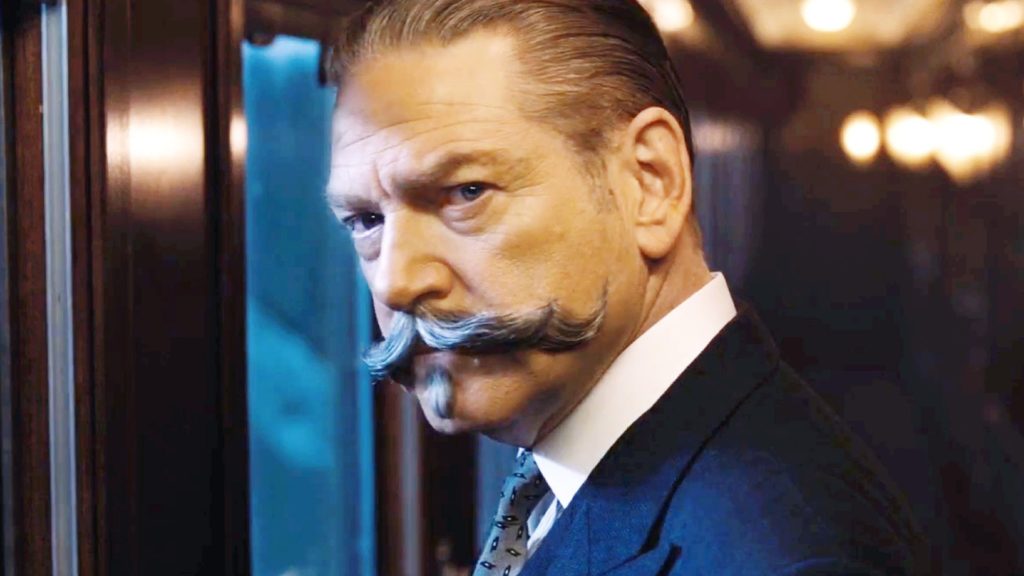
Act Run Time: 13 Minutes (12.2%)
ACT TWO: LEARNING THE RULES OF AN UNFAMILIAR SITUATION
The character Learns the Rules of an Unfamiliar Situation and faces Incidental Opposition in pursuit of a Transitional Goal. But when he receives a Reality Check, he makes a Commitment to his New Role.
Act Start Time: 13 Minutes (12.2%)
Poirot is stuck on a train with several eccentric strangers (the unfamiliar situation) who repeatedly interupt his downtime (incidental opposition) as he attempts to read Dickens and relax en route to London (transitional goal). But when strange noises in the night precede the train being derailed by an avalanche (the reality check) Poirot discovers one of the passengers has been murdered in the night and decides to solve the case (the commitment).
The Unfamiliar Situation: Poirot will be stuck on a train with an assortment of eccentric strangers for the next few days.
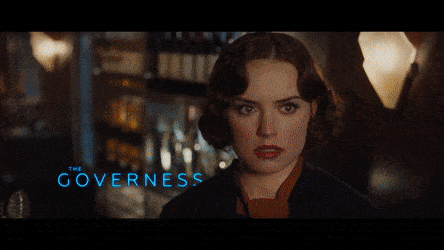
Transitional Goal: Read Dickens and return to London to solve the Kassner case.
Incidental Opposition: Poirot’s reading is repeatedly interrupted. An avalanche caused by a lightning storm derails the train, prolonging the trip.
Turning Point Catalyst – The Reality Check: Poirot is approached by the sleazy Ratchett who attempts to hire him as a bodyguard due to the threatening letters he has received. Poirot declines.That night there are several disturbing noises that prevent Poirot from sleeping. Shortly thereafter, lightning causes an avalanche that derails the engine.
Turning Point Two – The Commitment: Start Time: 37 Minutes (34.9%) – Poirot and a waiter discover Rachett’s stabbed up corpse. Bouc begs Poirot to figure out who did it. Poirot wants to enjoy his vacation, but eventually relents.
Act Run Time: 28 minutes (26.4%)
DRAMATIC PHASE TWO: CONFRONTATION
The character is thrown in the middle of the Central Conflict and is placed at direct odds with the forces of antagonism. He undergoes a series of successes and failures as he works toward resolving the main throughline.
ACT THREE: STUMBLING INTO THE CENTRAL CONFLICT
The character stumbles into the Central Conflict and faces Intentional Opposition in pursuit of a False Goal. But when there is a grave Turn of events, he has a Moment of Truth.
Act Start Time: 41 Minutes (38.6%)
Poirot matches wits with the killer (the central conflict) but is repeatedly lied to by the passengers (intentional opposition) as he tries to determine which of them killed Ratchet (false goal). But when Poirot discovers Ratchett was actually infamous child killer Cassetti (the turn) he begins trying to connect the murder to the Armstrong case (the moment of truth).
The Central Conflict: Poirot vs. the killer.
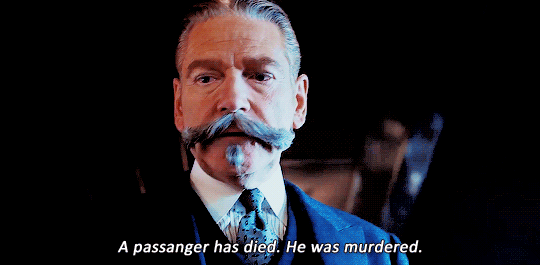
False Goal: Figure out which passenger killed Ratchett.
Intentional Opposition: The killer tries to keep their identity a secret and plants several taunting clues.
Turning Point Catalyst – The Turn: Poirot uses science to extract the contents of a partially burned note. He discovers that Ratchet is actually Cassetti, who famously kidnapped and murdered Daisy Armstrong.

Turning Point Three – The Moment of Truth: Start Time: 51 minutes (48.1%) – Mrs. Hubbard calls for Poirot and tells him the killer was in her compartment before Ratchet was killed. Poirot tells her Ratchet was Cassetti. She gives him a button from conductor’s uniform allegedly dropped by the murderer.
Act Run Time: 12 minutes (11.3%)
ACT FOUR: IMPLEMENTING A DOOMED PLAN
The character implements a Doomed Plan and faces Self-Inflicted Opposition in pursuit of a Penultimate Goal. But when an unthinkable Lowpoint occurs, he pulls himself together and discovers a Newfound Resolve.
Act Start Time: 53 Minutes (50%)
Poirot erroneously searches for a lone killer (the doomed plan) but his leads are discredited by other passengers (self-inflicted opposition) as he tries to figure which of them had motive to kill Cassetti (penultimate goal). But when Poirot finally admits he has no idea who the killer is (the lowpoint) he falsely accuses Ms. Debenham, is shot by Dr. Arbuthnot and resolves to solve the mystery before the train is allowed to leave (the newfound resolve).
The Doomed Plan: Figuring which individual is the killer is impossible as there is more than one killer.
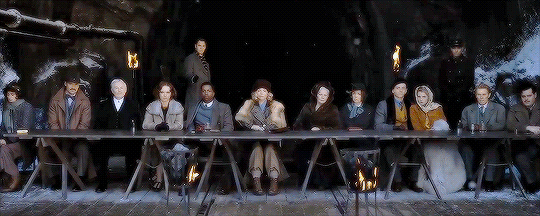
Penultimate Goal: Figure out which passenger killed Cassetti.
Self-Inflicted Opposition: Several of Poirot’s leads are discredited by the other passengers. It’s revealed in short order that everyone has a secret or a connection to Cassetti/Ratchett. His erroneous belief that MacQueen is the killer gets Mrs. Hubbard stabbed in the back by the actual killer.
Turning Point Catalyst – The Lowpoint: Poirot talks to his picture of Katherine and admits he has no idea who killed Ratchett and that he is afraid.
Turning Point Four – The Newfound Resolve: Start Time: 82 minutes (77.3%) – The passengers exit the train while the engine is put back on the track. Poirot calls for Ms. Debenham to have a private conversation. He reveals he knows her connection to the Armstrongs and accuses her of murdering Cassetti. Dr. Arbuthnot shows up, shots Poirot in the arm and admits to the murder. Bouc saves Poirot, knocking the doctor out. Poirot tells everyone to gather in the tunnel and resolves to solve the case.
Act Run Time: 34 minutes (32%)
DRAMATIC PHASE THREE: RESOLUTION
The character engages in a final confrontation with the forces of antagonism to resolve the Central Conflict. The main throughline and all additional subplots are resolved. The new status quo is established.
ACT FIVE: TRYING A LONGSHOT
The character tries a Longshot and faces Ultimate Opposition while trying to accomplish the Ultimate Goal. But just when it seems All is Lost, he makes a Final Push against the forces of antagonism and either succeeds or fails.
Act Start Time: 87 minutes (82%)
Poirot tries to quickly walk through everything he’s learned (the longshot) wrestling with his prodigious skills of detection (ultimate opposition) to uncover the multiple killers. (ultimate goal). But when Poirot reveals they are all guilty of the murder and says they will need to kill him to get away with it (all is lost) he realizes that justice in the case is impossible as they are all suffering from grief (the final push).
The Longshot: Poirot tries to work through everything he’s learned to quickly and finally solve the case before the train departs.
Ultimate Goal: Uncover the multiple killers.
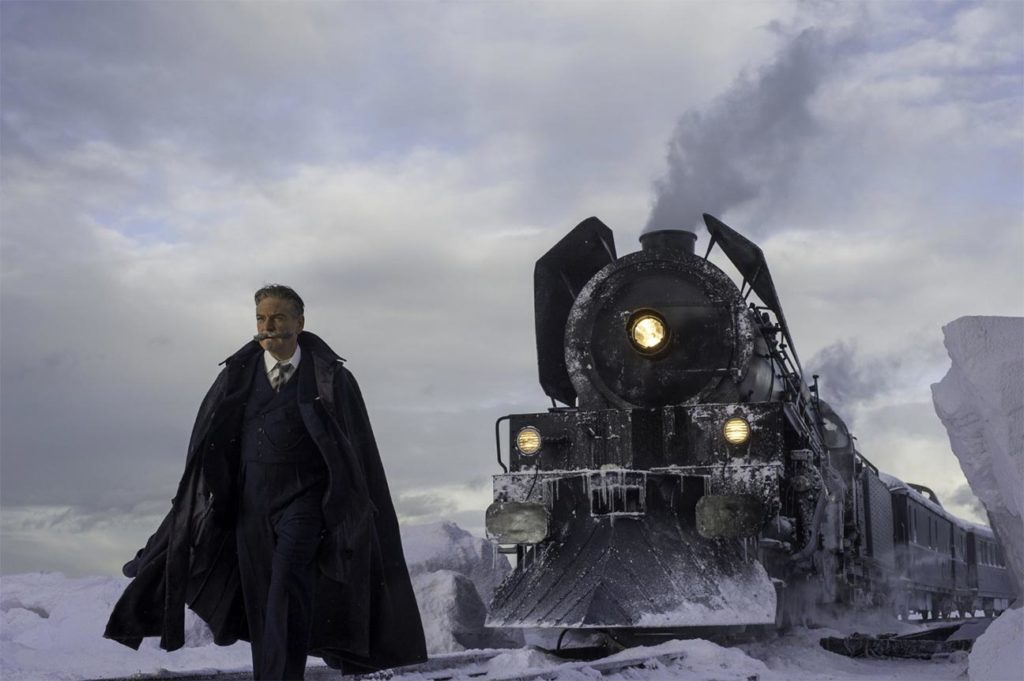
Ultimate Opposition: Poirot wrestles with his own prodigious brain as he tries to solve the murder using the established clues. It seems as though the murders will have to kill Poirot to get away with the murder.
Turning Point Catalyst – All is Lost: Poirot reveals that they each took turns stabbing Cassetti. Mrs Hubbard/Linda Arden confesses to the plan being hers. Poirot sets his gun on the table and tells them all they can walk free if they kill him. Linda Arden grabs to gun and it appears he will be killed. She instead attempts to shoot herself with it but the gun is empty.
Turning Point Five – The Final Push: Start Time: 99 minutes (93.3%) – As he prepares to debark the train to discuss the murder with the Yugoslavian police, Poirot tells the gathered passengers that justice is impossible in the case, as Cassetti deserved death. For the first time, Poirot will have to live with a lie and imbalance, while the killers go free.
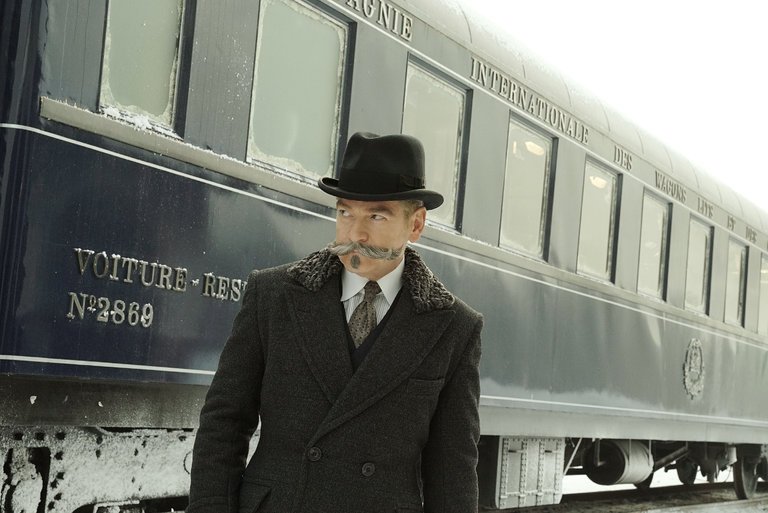
Act Run Time: 17 minutes (16%)
ACT SIX: LIVING IN A NEW SITUATION
Having accomplished (or failed to have accomplished) the Ultimate Goal, the character is shown living in a New Situation.
Act Start Time: 104 minutes (98.1%)
The New Situation: The killers go free and Poirot lives with the lie. He’s immediately approached by a messenger who requests he come to Egypt to investigate another murder.
Act Run Time: 2 minutes (1.9%)



This is fascinating stuff, I have learned a ton from your site, love it!
Keep up the good work
Cary
Thanks, Cary! My book, Actions and Goals, goes into much greater detail if you haven’t read it already.